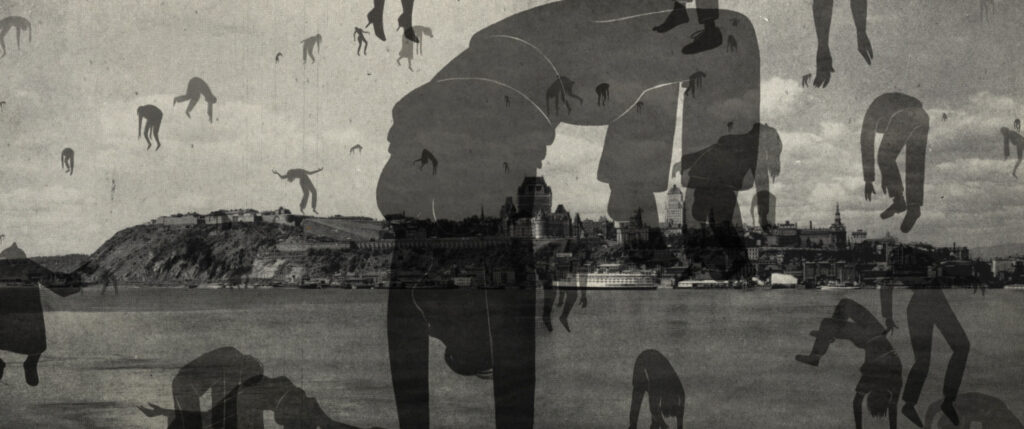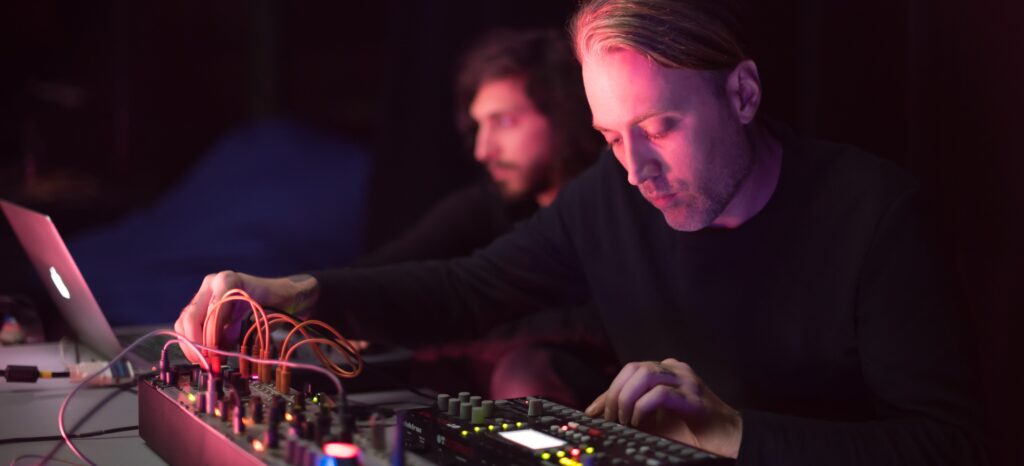During a panel held as part of the symposium “Falling Asleep in Images,” presented by the cinEXmedia partnership at the 92nd ACFAS Congress, the two artists discussed the role of dreams in their creative process.
Olivier Du Ruisseau

Through its various research and creation projects, cinEXmedia uncovers unexpected connections between cinema, sleep, and dreaming. Whether in the research of Antonio Zadra and Santiago Hidalgo on how cinematic language influences our experience of dreams, or in Michelle Carr’s studies on the impact of cinema on dream content, these works draw on the combined expertise of researchers in health sciences and arts studies.
These questions resonated during the symposium “Falling Asleep in Images: The Impact of Audiovisual Content on Sleep and Dreams,” organized by cinEXmedia on May 9, 2025, at the School of High technology in Montreal. In a panel titled “The Dream Factory: Conceptualization and Artistic Creation,” Thomas Carrier-Lafleur, associate director of the CinéMédias Lab and scientific coordinator of cinEXmedia, invited artists to share how dreams inspire and shape their creative work.
Experimental vocalist and composer Philippe Lambert and animation filmmaker Félix Dufour-Laperrière each presented their artistic approaches, both of which offer innovative representations of dreams. Their presentations, delivered before an audience of students and researchers, revealed the complexity of their perspectives.
Dreams in Virtual Reality
Philippe Lambert presented Rêve (2018), a virtual reality experience produced by the National Film Board of Canada (NFB). Initially premiering at the digital arts festival Mutek, and later adapted as an online accessible experience , the work aims to be, in the artist’s words, a “translation of the dream experience into sound and image.” In its installation form, the scenography was designed to create a comfortable environment suitable to immersion.
“A dream is like a film: it has camera angles, scenes, lighting, sound—but no smells and no realistic depiction of the world,” he said at the beginning of his presentation. The musician, who composed the soundtrack for the project, went on to describe the production process, which involved multiple collaborators from 2016 to 2018.
It all began with a draw-in concert in Amsterdam, where Lambert and his team invited the audience to draw their dreams while listening to his music: “I wanted to put the audience in the role of the artist, making the piece a collective experience.” The visuals were then generated using an audiovisual synthesizer custom-coded by Édouard Lanctôt-Benoit. Caroline Robert and Vincent Lambert also created dreamlike landscapes made up of shifting, abstract, and colorful forms that encouraged contemplation.
“In the project, we navigate through dream memories—representations created by the artists based on their own dreams and interpretations of the public’s drawings,” Lambert continued. “It made me reflect on broader questions of transmission, because we live in a world shaped by the dreams of our ancestors. That’s what creation is, ultimately: turning dreams into reality.”

Fantasized Projections
Félix Dufour-Laperrière presented his animated feature films Ville Neuve (2018) and Archipel (2021). His latest film, La mort n’existe pas (2025), also animated, premiered at the Directors’ Fortnight at the Cannes Film Festival, and is set for its theater release in the fall.
The filmmaker explained how he worked with dreams in different ways in both films: “In Ville Neuve, we follow a couple between Gaspésie and Montreal in the months leading up to the 1995 Quebec referendum. We literally depict the characters’ dreams—dreams act as a narrative driver, a transitional link. In Archipel, which is framed as a fake documentary about islands in the St. Lawrence River, dreams are more of a pretext to evoke a shared vision of territory: we project fantasies onto the islands.”
According to Dufour-Laperrière, animation—more than live-action film—offers an immediate connection to the world of dreams, since it’s built on illusion: “Archipel, for instance, mirrors the nonlinear logic of dreams. Even during the creative process, we worked with juxtaposition and layering. Animation is very powerful in that sense. From the start, the contract with the viewer is clear: it’s artificial. No one believes that what they see on screen is real—but we’re still brought to believe to a kind of truth.”
The discussion continued with an exploration of his animation techniques, his collaboration with his production team, and his relationship to music. Although the filmmaker’s more figurative approach differs from Lambert’s, both artists emphasized the importance of representing dreams in ways that go beyond clichés—whether by evoking a meditative, bodily experience in virtual reality or by exploring political themes through animation.
On November 13, 2025, the Observatoire du cinéma au Québec will present a screening of Archipel, followed by a conversation with Félix Dufour-Laperrière, hosted by Thomas Carrier-Lafleur, at the Carrefour des arts et des sciences of the Université de Montréal.
